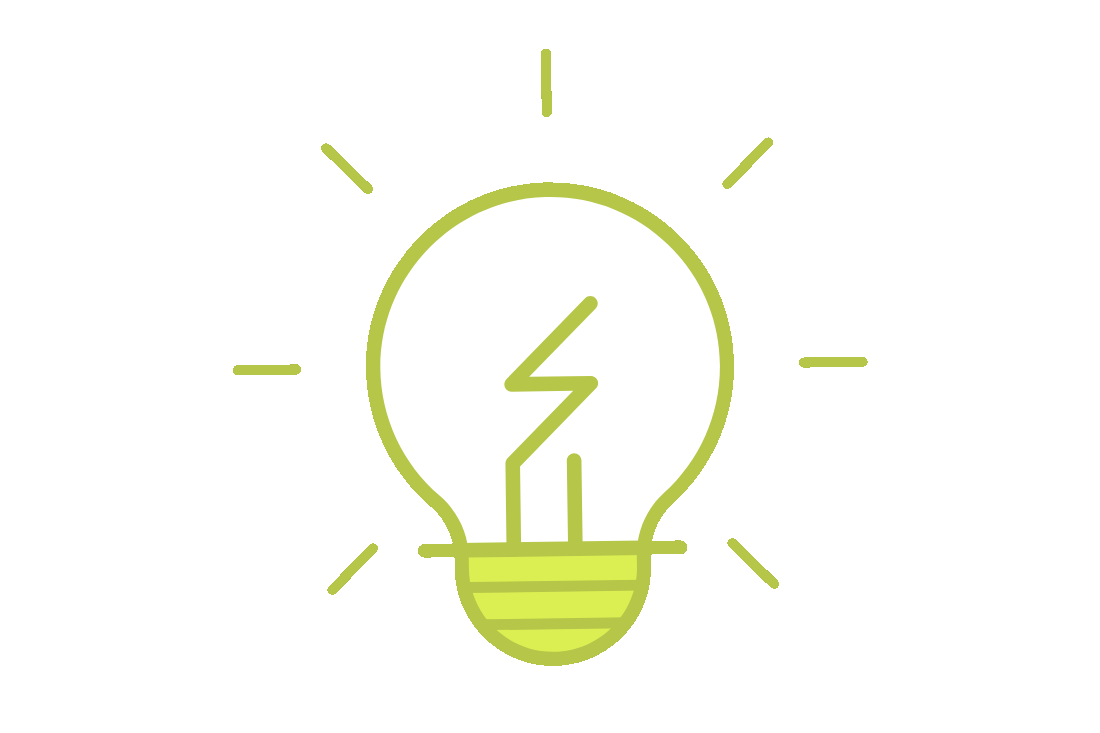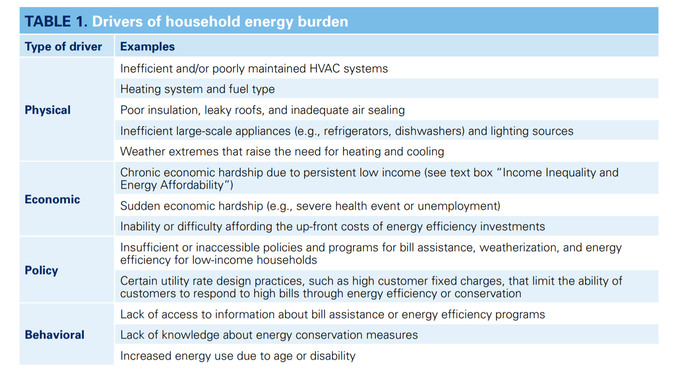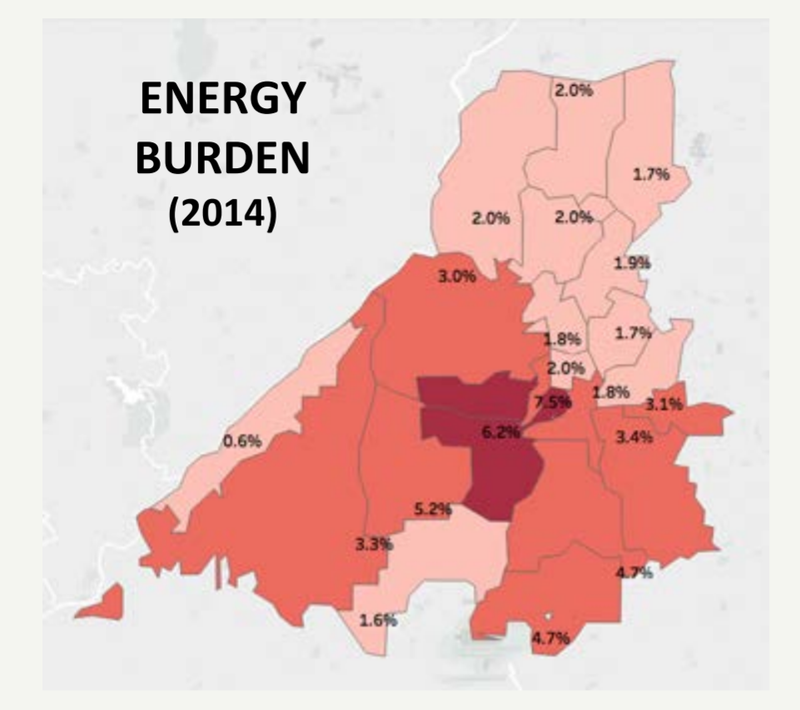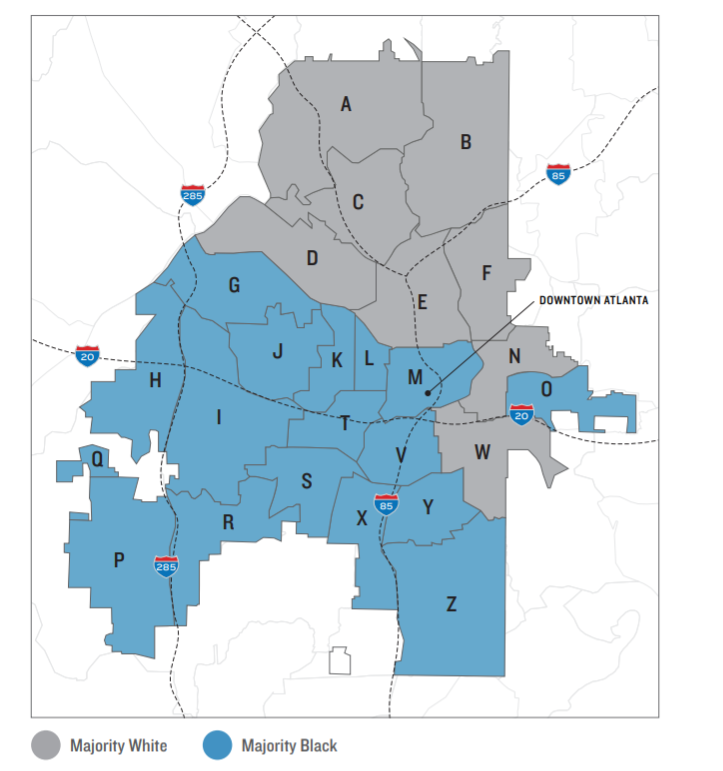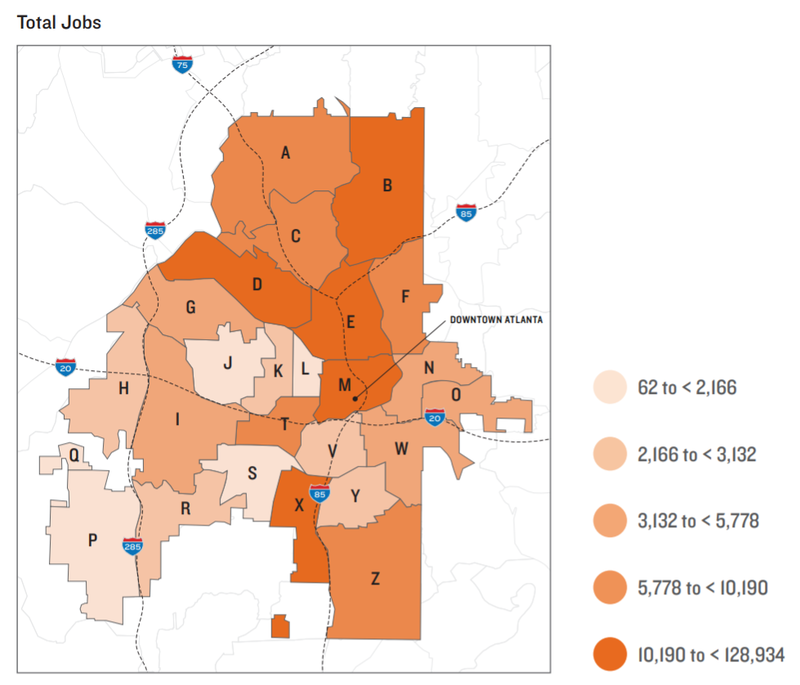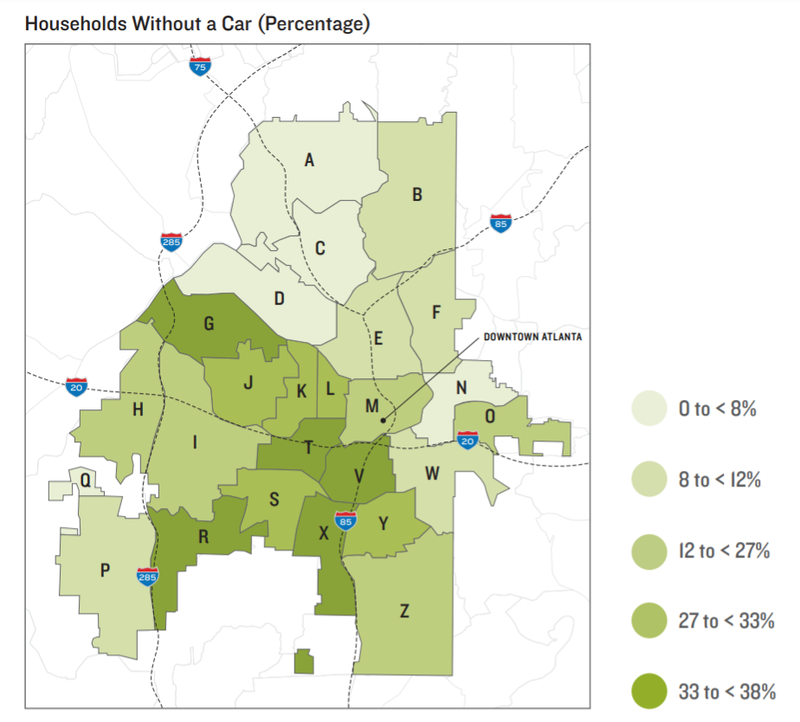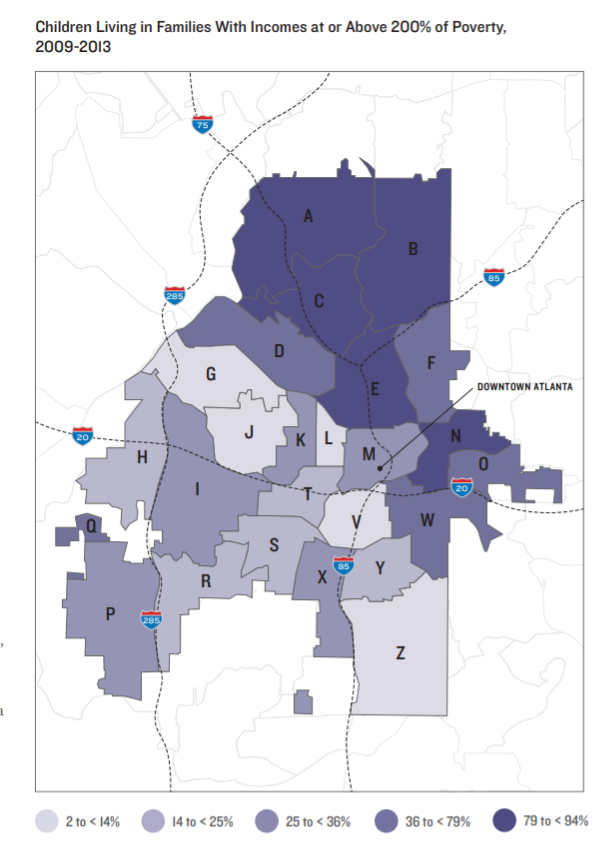In everything we do,
|
What is energy equity? The Partnership for Southern Equity defines energy equity as “the fair distribution of benefits and burdens from energy production and consumption” (Just Energy, n.d.). A community’s relative energy equity or inequity may be measured by the energy burdens of its residents; this is the percentage of a household’s income spent on electric, gas, or other power utilities (Drehobl & Ross, 2016, p. 8). Researchers consider an energy burden “unaffordable” at 6% or higher, yet low-income Atlanta households spend a median 10.2% of their income paying electricity bills. What’s more, one in four low-income Atlantans faces an energy burden of 18.2% or greater, more than triple the unaffordability threshold (Drehobl & Ross, 2016, pp. 10-20). These burdens disproportionately affect Atlanta's communities of color, particularly the Black & Latinx populations. |
How do energy burdens
|
"Families suffering from high energy burdens . . . tend to experience stress from living in constant fear of losing necessary electricity and gas service due to inability to pay their bills." (Drehobl & Ross, 2016, p. 13)
In Atlanta, communities experiencing the highest energy burdens face many additional challenges. A 2017 Georgia Tech study found that, in areas where home energy is unaffordable, unemployment rates are higher, residents are less likely to own a car, and more children live in poverty, as represented in the following graphics:
(Source: Understanding Energy Burden and Its Solutions for Atlanta.)
This study also found that many low-income residents must navigate high-fee check cashing operators or predatory payday loans to pay their bills. Should these residents be unable to pay and face a utility shutoff, homelessness is a tangible threat.
Researchers concluded that:
“Living in energy-inefficient housing contributes to an enduring cycle of poverty for low-income families.“ (Georgia Tech, 2017)
Researchers concluded that:
“Living in energy-inefficient housing contributes to an enduring cycle of poverty for low-income families.“ (Georgia Tech, 2017)
Energy equity and racial justice
“If low-income housing stock were brought up to the efficiency level of the average US home, . . . for African-American and Latino households, 42 percent and 68 percent of the excess energy burden, respectively, would be eliminated.”
(ACEEE, “Press Release: ‘Energy Burden’ on Low-Income, African American, & Latino Households," 2016)
(ACEEE, “Press Release: ‘Energy Burden’ on Low-Income, African American, & Latino Households," 2016)
When looking at America’s energy landscape, the intersection between poverty and racial inequality is unmistakable. |
Researchers at Georgia Tech have found that the Metro Atlanta communities facing the harshest energy burdens are in majority-Black areas (Understanding Energy Burden, 2017). Researchers at the ACEEE have also repeatedly found that high energy burdens disproportionately impact Black and Latinx households, as well as renters and the elderly (“Understanding Energy Affordability,” n.d., p. 3). |
What is retrofitting?
|
Retrofitting, also called weatherization, refers to the various methods of increasing a home’s energy efficiency and performing other structural improvements. When homes become more energy-efficient, this results in lower energy bills and fewer greenhouse gas emissions.
In addition to the benefits retrofitting provides to homeowners and low-income residents, it also presents vocational and earning opportunities for the unemployed. Jacqueline Patterson, the NAACP’s Director of Environmental and Climate Justice, has pointed out that: "For unemployed persons ... retrofitting and weatherization may provide a pathway out of poverty." (ACEEE, "Press Release," 2016.) |
In Summer 2019, MAYE Corps performed our first home weatherization project, for which we received Honorable Mention from Georgia Tech’s Carbon Reduction Challenge.
|
We also spent MLK Day of Service 2020 completing home repairs for elderly Decatur residents in partnership with the Community Center for South Decatur.
More recently, MAYE Corps was awarded a grant from Projects for Peace to perform several retrofits and educational workshops in the South Decatur community during Summer 2020; due to the COVID-19 pandemic, these projects have been postponed. |
Existing Assistance Programs
A number of nonprofit, governmental, and corporate programs exist to aid low-income households with home energy affordability. However, experts argue that greater funding, expansion, and utilization of these programs is needed to adequately address Georgia’s low-income energy burdens (Fisher, Sheehan & Colton, 2020) (Drehobl & Ross, 2016, p. 6).
Below, we provide a non-exhaustive list of existing energy assistance and weatherization programs.
Below, we provide a non-exhaustive list of existing energy assistance and weatherization programs.
|
Organization
|
Reach
Local Regional Local Local Federal Local & Regional Local (City of Atlanta, Fulton, DeKalb, & Cobb Counties.) Local & Regional Federal |
Assistance program(s) offered
Martin Luther King Jr. Service Project--fixed or low-income residents 62+ years of age. Home and yard maintenance. Home Energy Improvement Program (rebates), Lighting Program, Refrigerator Recycling, Home Energy Checkup, Senior Citizen Bill Discount Repair with Kindness Program--low-income households, “critical home repairs”. Reuse Center & Store--low cost materials to sell to the community. Home improvement educational workshops. Bill assistance, energy crisis assistance, and low-cost/minor weatherization projects. Just Energy Circle—Advancing Equity & Opportunity Collaborative, community organizing (in Cobb EMC service area, Atlanta, Fort Valley, Savannah, HBCUs), leadership development, community engagement. Safe at Home Program--safety upgrades and modifications for older adults. Green Housing Program--energy and water efficiency retrofits. BIT Building Program (not single family residential), Care & Conserve Plumbing Repair Program, Residential Green Building Programs Grants to states, territories, and some Native American tribes for low-income home energy efficiency. |
Find Out More
|
Check out these sites to learn more about energy equity in Atlanta.
Georgia Tech Study More Resources: |
References
American Council for an Energy-Efficient Economy [ACEEE]. (2016, April). “Press Release: ‘Energy Burden’ on Low-Income, African American, & Latino Households up to Three Times as High as Other Homes, More Energy Efficiency Needed.” https://www.aceee.org/press/2016/04/report-energy-burden-low-income
American Council for an Energy-Efficient Economy [ACEEE]. (n.d.) “Understanding Energy Affordability.” https://www.aceee.org/sites/default/files/energy-affordability.pdf
Drehobl, A. & Ross, L. (2016, April). “Lifting the High Energy Burden in America’s Largest Cities.” American Council for an Energy-Efficient Economy. https://www.aceee.org/sites/default/files/publications/researchreports/u1602.pdf
Fisher, Sheehan & Colton [FSC]. (2020, April). “The Home Energy Affordability Gap 2019: Georgia.” https://drive.google.com/file/d/18UV5-7f3VnStE4s31W4x1Xa08V9KjsVV/view
Georgia Institute of Technology [Georgia Tech]. (2017). Understanding Energy Burden and Its Potential Solutions for Atlanta. https://cepl.gatech.edu/sites/default/files/attachments/EE%20Phase%201_4-13-18.pdf
Partnership for Southern Equity [PSE]. (n.d.). Just Energy. https://psequity.org/just-energy/
American Council for an Energy-Efficient Economy [ACEEE]. (n.d.) “Understanding Energy Affordability.” https://www.aceee.org/sites/default/files/energy-affordability.pdf
Drehobl, A. & Ross, L. (2016, April). “Lifting the High Energy Burden in America’s Largest Cities.” American Council for an Energy-Efficient Economy. https://www.aceee.org/sites/default/files/publications/researchreports/u1602.pdf
Fisher, Sheehan & Colton [FSC]. (2020, April). “The Home Energy Affordability Gap 2019: Georgia.” https://drive.google.com/file/d/18UV5-7f3VnStE4s31W4x1Xa08V9KjsVV/view
Georgia Institute of Technology [Georgia Tech]. (2017). Understanding Energy Burden and Its Potential Solutions for Atlanta. https://cepl.gatech.edu/sites/default/files/attachments/EE%20Phase%201_4-13-18.pdf
Partnership for Southern Equity [PSE]. (n.d.). Just Energy. https://psequity.org/just-energy/

